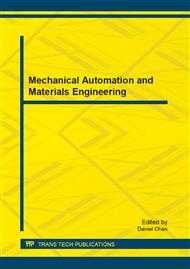p.267
p.275
p.280
p.285
p.290
p.294
p.299
p.304
p.309
Research on Gap Adjustment for Offset Printing Machine Based on ARM
Abstract:
Many problems exist in traditional gap adjusting for offset printing machine, so an automatic regulating technology is proposed. In the course of this research, the hardware system of the gap adjusting is designed by the embedded ARM controller as the core of the automatic control system, the developing process of the ARM control program is illustrated. The method for automatically adjusting the gap can simplify the operation, improve performance of the offset press, improve the stability and reliability of the offset printing process, and has a certain practical value, and has obtained the ideal effect.
Info:
Periodical:
Pages:
290-293
Citation:
Online since:
August 2013
Authors:
Keywords:
Price:
Сopyright:
© 2013 Trans Tech Publications Ltd. All Rights Reserved
Share:
Citation:


